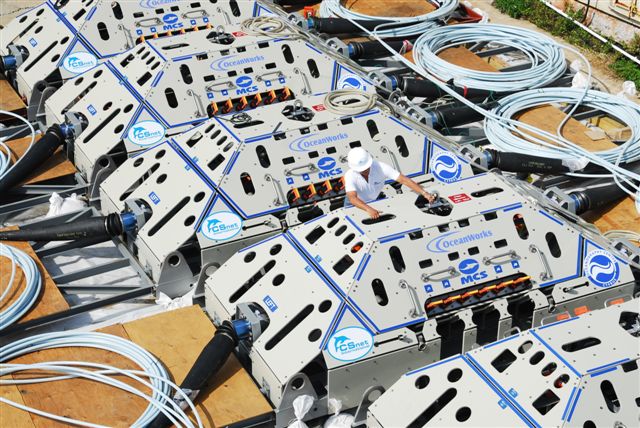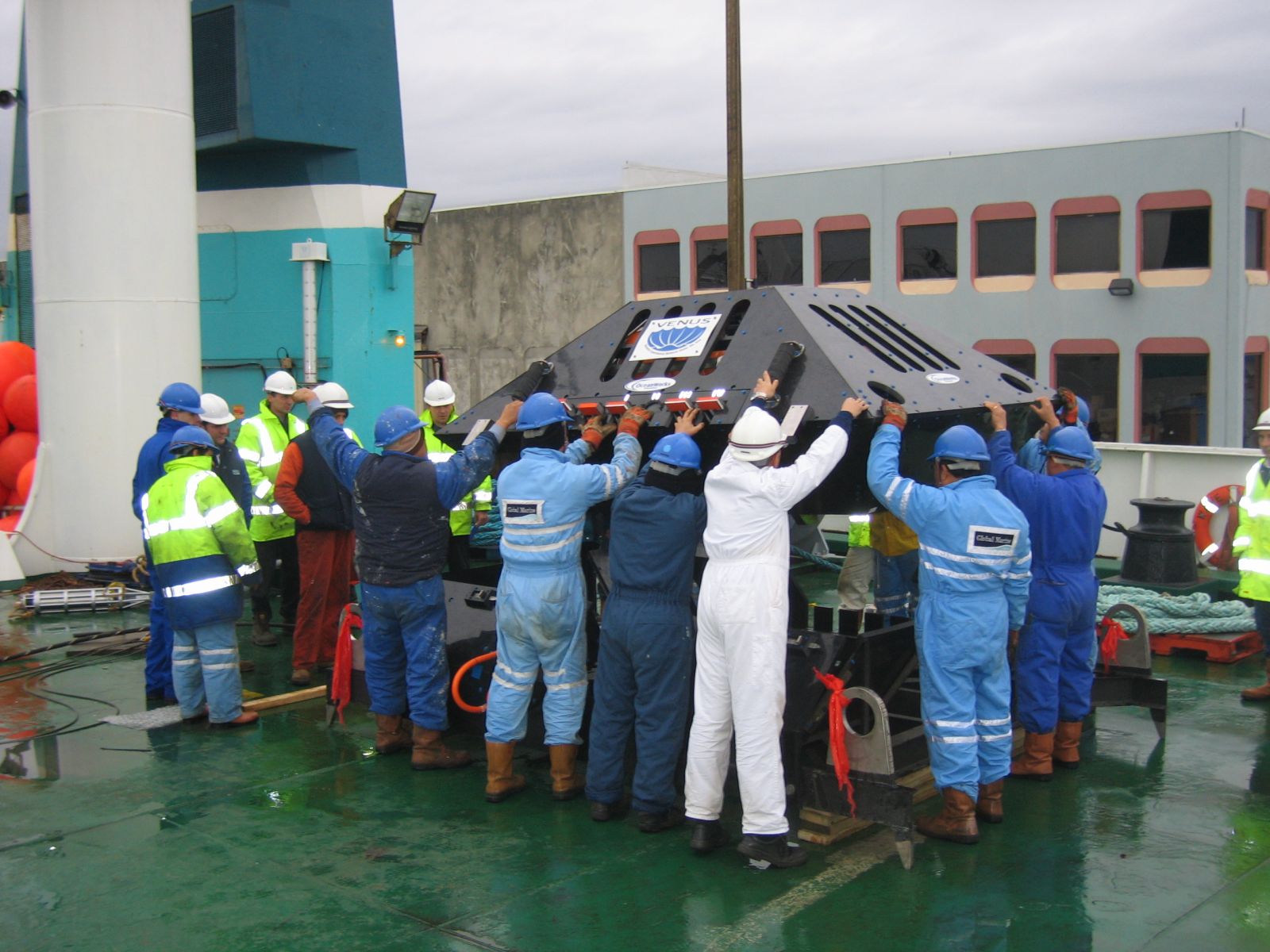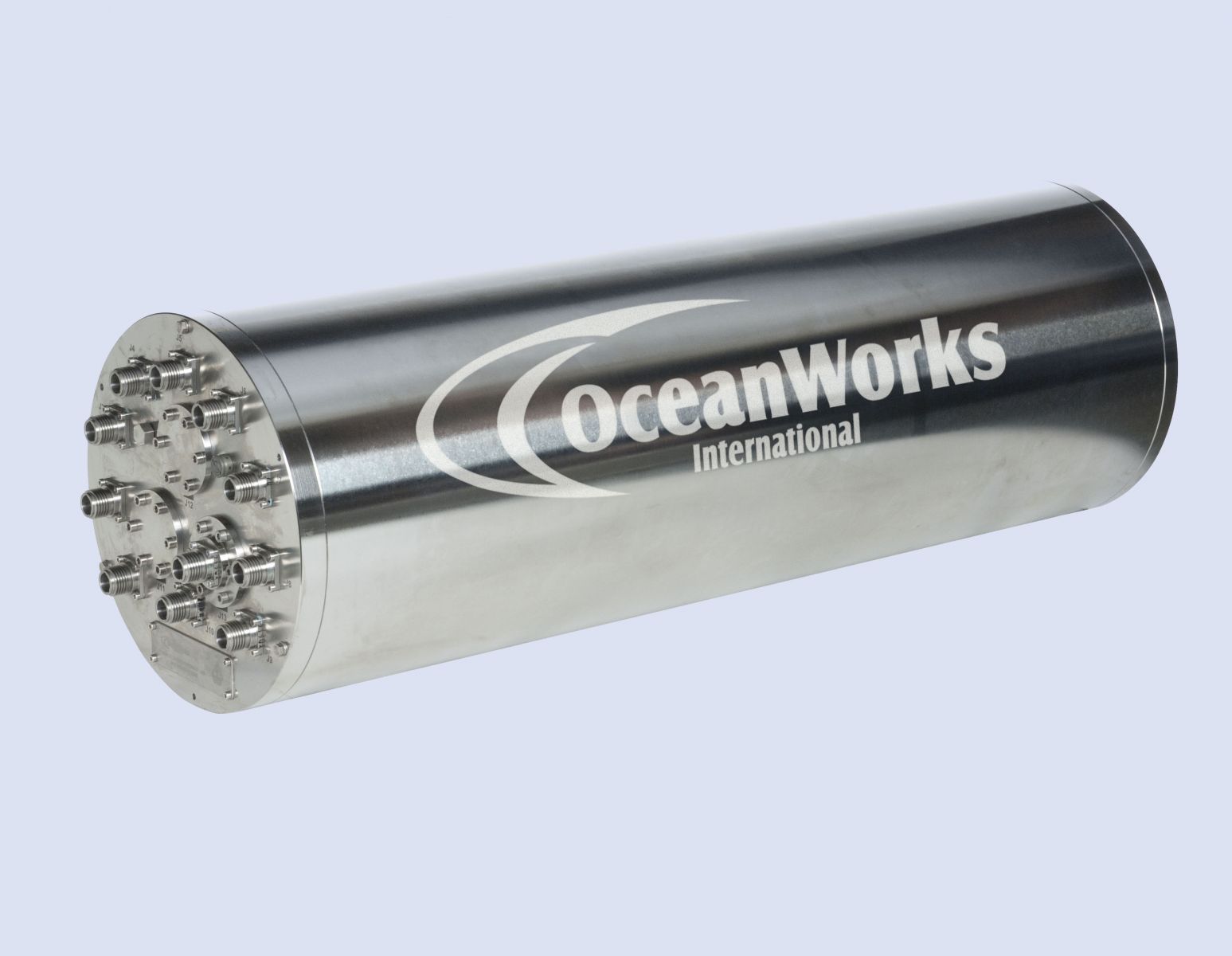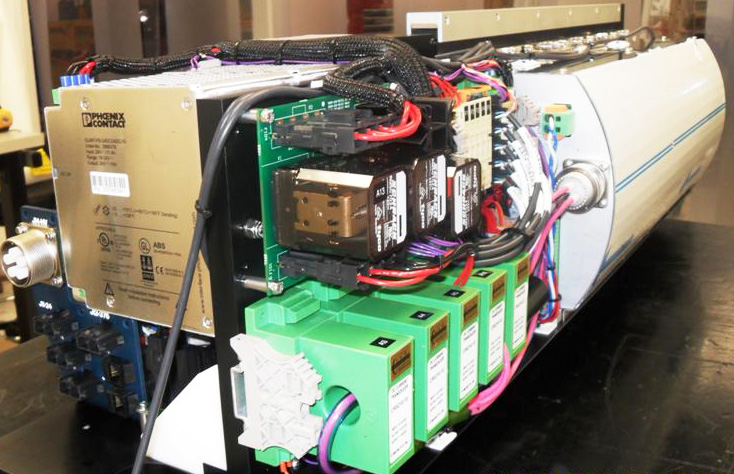Seafloor Network & Observatory Components
OceanWorks International's seafloor network systems can be configured to allow flexibility in capability and budget. Each component can be customized to suit the instruments used, data interface, control and power levels required.
Primary Node

Primary nodes are large modules connected to the backbone cable at spacing and location that suits the area under observation. They serve as the base which distributes power, gathers data and controls instruments. The base structure can be left on the seafloor for the life of the system and provides connectivity between the backbone power and data links between all primary nodes without interruption if a particular nod pod is removed for service.
An ROV removable pod houses the power supply, control and data processing electronics in one or more pressure vessels. The power supply module converts the supplied medium voltage (1kV to 10kV) power to an intermediate voltage (375VDC). The intermediate voltage is distributed to a number of ports that can be connected underwater. Similarly, high speed fiber optic communications are distributed to the ports in either copper or fiber. The pod power and optical links can be connected and disconnected from the base / backbone cable by an ROV with wet mate connectors. Instruments are also connected to the pod by an ROV, and can be replaced or exchanged as required for gathering different types of data.
Input: Backbone medium voltage (1kV to 10kV) power and high speed fiber optic communications
Output: Intermediate voltage (375VDC) power, fiber or copper communications
Ports: Typically from 4 to 8 underwater mateable connectors
Redundancy: Fault tolerant for control, power and communications
Power return: Seawater
Structure: Trawl resistant frame with removable electronics pod
Secondary Node

Secondary nodes are used to expand the seafloor network's range and are usually configured in branches running from the main backbone. An ROV can be used to connect secondary nodes to primary nodes with underwater, wet mate optical and power connectors. The secondary node can be located up to 10 km from the primary node and provides further distribution of intermediate voltage power and communications. Instruments can be connected to a secondary node or via Subsea Instrument Interface Modules (SIIMs), or Junction Box. Each port is individually switched and monitored for power draw and ground faults. There can be up to 8 ports on each secondary node.
Input: Intermediate voltage (375VDC) power and fiber optic communications
Output: Intermediate (375VDC) & Low (15 to 48VDC) voltage power, fiber or copper communications
Ports: 4 to 8 underwater mateable connectors
Redundancy: Optional fault tolerance for control, power and communications
Power return: Cable
Structure: Optional trawl resistant frame
Subsea Instrument Interface Module (SIIM)

The SIIM is a pressure vessel containing power supplies and hardware for connecting several instruments that require varying levels of control, monitoring and power. Up to 10 instruments are connected to the SIIM with dry mate connectors mounted on the end plate of the cylindrical pressure vessel before the SIMM is deployed. The SIIM may then be connected to any of the primary or secondary node ports (4 to 8 per node) via and underwater wet mate connector, resulting in the ability to run up to 80 instruments off of a single node. The SIIM provides a range of individually switched and monitored low voltage ports and communications options to support various oceanographic instruments used on cabled observatories. The many instruments connected via the SIIM to the primary and / or secondary nodes form the integrated observatory.
For smaller observatories or customers with limited budgets, the entire observatory can be configured using a single or multiple frame mounted SIIMs with pre-connected instruments.
Input: Intermediate (375VDC) voltage power and copper communications
Output: Low (15 to 48VDC) voltage power and copper communications
Ports: 6 to 10 dry mateable connector
Redundancy: Optional fault tolerance for control, power and communications
Power return: Cable
Structure: Optional open instrument frame
Medium Voltage Converter (MVC)
The Medium Voltage Converter (MVC) consists of two 1kW power modules running in parallel. They are housed in a cylindrical pressure vessel fitted with end plate connectors. In normal operation, the load is distributed evenly between the two modules. With a design life in excess of 10 years, the two-module design allows for graceful degradation of the power supply in the event of a module failure.
• Input: 1.2 kV to 1.8 kV
• Output: 375VDC
• Features:
• Over voltage protection against line transients
• Maximum power 2kW
• Isolated telemetry
• Redundancy: Fault tolerant
• Power Return: Seawater
• Structure: Mounted inside a primary node
Subsea Uninterruptable Power Supply (UPS)
The OceanWorks Uninterruptable Power Supply (UPS) provides an autonomous, reliable power source for a wide variety of subsea applications. The UPS builds on proven designs previously deployed and qualified for 25 a year life with a 5 to 10 year battery maintenance cycle. The system is designed to provide maximum assurance of power delivery by using multiple redundant elements. Applications range from assured power to load leveling. The UPS is configured with individual battery modules to allow for increasing power level and capacity by series and parallel connection between modules. Battery housing modules can be pressure vessels or pressure compensated and oil filled, depending on the battery type and specific requirements. The battery modules are typically mounted in open frame structures and supplied with a variety of monitoring, switching and connection panel options, including ROV underwater mate connectors.
• Input: 300VDC to 400VDC
• Output: 375VDC buffered
• Features:
• Modular
• Capacity: From 50kWhr to 1MWhr
• Ethernet based control and telemetry
• Redundancy: Independent modules, graceful degradation on failure
• Power Return: Seawater or cable
• Structure: Optimal trawl resistant frame


.JPG)